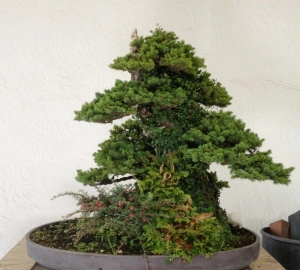Guide To Choose The Right Tools To Grow A Bonsai Tree

Growing a Bonsai requires a little more effort than normal plant germination. Planting a few seeds in the soil and letting nature do the rest of the work is not enough. Bonsai trees require proper watering, constant care, nutrients, sunlight, and the right tool to manipulate their growth.
You cannot just pull out a twig to bend the branch with your bare hands to give it the right shape. Before growing a Bonsai tree, you must stock up on the right tools.
Why Do You Need Bonsai Tools?
The right tools are important for growing all plants. However, in the case of Bonsai, it holds a little more importance. Using the wrong forestry tools for Bonsai may damage the tree and the tool, as these plants are sturdy and strong.
Moreover, using the wrong tools will keep you from achieving desired results. Bonsai tools in Australia are easily available online. However, you must be careful to choose premium quality accessories as the weight is evenly distributed and will not be tiring to use for long durations.
Cheap bonsai tools tend to be heavier and can also break or bend if you put pressure on them. Here is a comprehensive list of Bonsai tools you need to grow and shape the tree successfully.
What are the Right Tools You Need to Grow a Bonsai Tree?
Traditional Bonsai Shears
Premium quality Bonsai shears are easily available online. But you must be careful to buy high-quality accessories as you will use these shears to make careful cuts on the Bonsai tree.
Bonsai trees need shaping quite often, so the kind of shears you purchase is important. Do not buy shears that will bend or snap after a few uses. They should be strong and sharp enough to make smooth cuts and carry out the intricate detailing required.
High-quality Bonsai shears are made in Japan using carbon steel blades to make them durable for long-term use. Unlike normal shears, the blades of this specially designed tool are curved to help you make smooth cuts through narrow and small openings.
Bonsai Scissors:
One of the most striking features of Bonsai trees is their shape. To keep your tree in the proper form, you will need sharp Sakagen Japanese bonsai scissors made of high-quality carbon steel. These are ideal for beginners and professionals and help you prune the tree easily.
These specially crafted scissors are mostly used for delicate work on small branches. The compact size will also help you trim and prune the tree through narrow openings and spaces.
Bonsai Ashinaga Shear
Ashinaga in Japanese means long handle. So these shears, also known as Long handle shears, are mostly used for defoliating and thinning the Bonsai tree. This is an essential tool for any Bonsai enthusiast and is used frequently to make precision cuts on the tree.
Another rendition of this Japanese Bonsai tool is the butterfly shear. However, it is best to choose the traditional tools for better results. Most Ashinaga shears are made of high-carbon steel and are considered one of the basic tools for Bonsai growth and care.
Bonsai Knuckle Cutter
The Bonsai knuckle cutter is quite similar to the concave cutter in shape. The visible difference between the two is the shape of the blades and the function. While the knuckle cutter blades are semi-round in shape, concave cutter blades are flat, sharp, and straight.
Another traditional precision Bonsai tool from Japan, the knuckle cutters, also known as knob cutters, trim the bonsai branches in a clean convex-shaped cut leaving behind a deep scar.
Bonsai Concave Cutter
Last but not least is the concave cutter which is considered mandatory for any bonsai enthusiast. Concave branch cutters are commonly used to make cuts on the tree when it is growing.
You will need to use this device often, so it makes sense to include it in your bonsai starting kit. Concave cutters are usually made of high carbon steel, and their compact size will help you squeeze into tight spaces to work on the tree.
The cuts made on the tree will be deep but will heal quickly. Concave cutter blades are flat, straight and sharp, which renders a smooth cut. Jagged, improper cuts on the bonsai tree will take time to heal and can sometimes damage the overall quality of the plant.
In Conclusion
Now, you have a complete list of the basic tools required for caring for and maintaining a Bonsai tree to become a pro Bonsai enthusiast in no time.
Author bio: Mike Sharp is an Australian horticulturalist living in Northern NSW with a keen interest in bush regeneration and native plants. He has worked with Forestry Tools on multiple bush regeneration projects in recent years.

